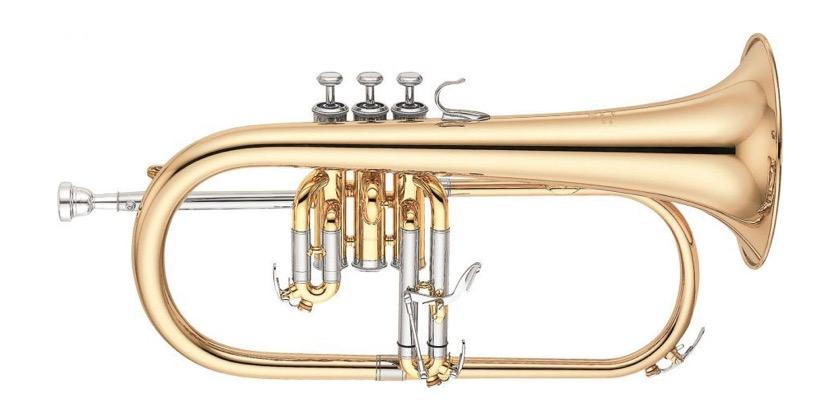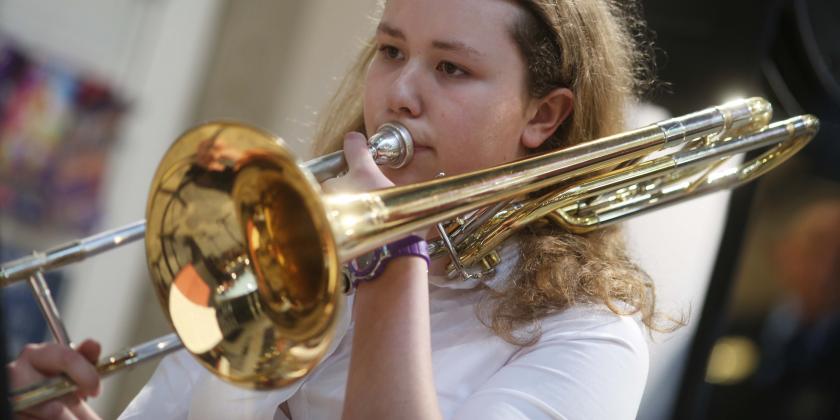Each Brass instrument is shaped differently and the pipes are twisted and widened to create different sounds.
Like the woodwind family, brass players use their breath to produce sound, but instead of blowing into a reed, players vibrate their lips by buzzing them against a metal cup-shaped mouthpiece. The mouthpiece helps to amplify the buzzing of the lips, which creates the sound. Most brass instruments have valves attached to their long pipes; the valves look like buttons. When you press down the valves, they open and close different parts of the pipe making it longer or shorter and therefore changing the pitch of the note. Brass players also change the pitch and sound by buzzing their lips harder or softer.
The only brass instrument without valves is the trombone which has a slide; trombone players shorten and lengthen the slide to alter the pitch of the note.
The brass family members that are most commonly used in an orchestra include the trumpet, French horn, trombone, and the tuba. Other brass instruments are also found in brass bands, concert bands or wind bands such as the Tenor Horn, Flugel horn, Baritone and Euphonium.



